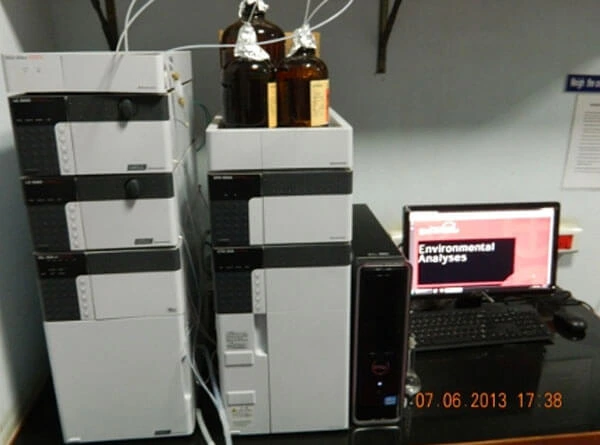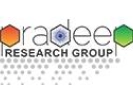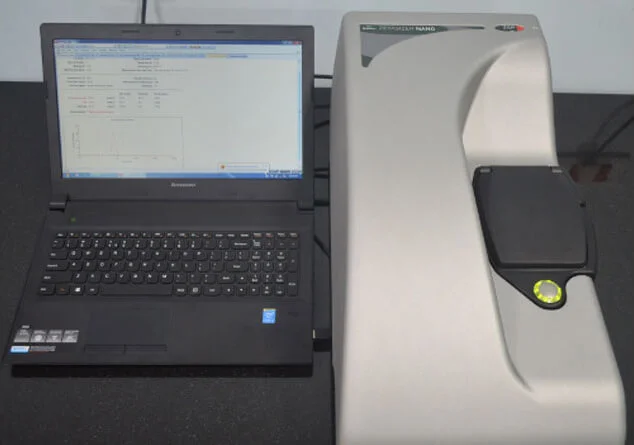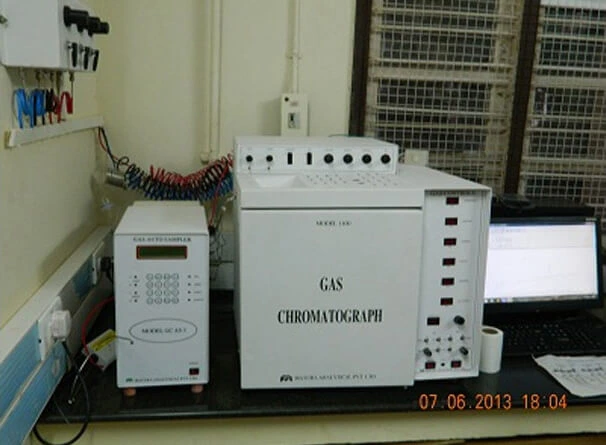The mobile phase is composed of one or more reagents that circulate through the HPLC at a preset flow rate and ratio. Reagents are stored in mobile phase reservoirs and drawn out through a tube by the pump. Depending on the nature of the samples, an isocratic or gradient mobile phase can be used. An isocratic phase maintains a consistent solvent concentration throughout the analysis and requires one solution reservoir. A gradient elution varies the concentration of mobile phase based on a preset schedule.
The injector draws a preset volume of liquid from the sample vial and injects it into the mobile phase flowing through the system. Depending on the chemical response needed and the amount of samples available, injection volumes typically range from 10 to 50 ml. Most modern HPLCs are equipped with an automated injector located within a temperature-controlled enclosure.
The pump is responsible for circulating the mobile phase and sample through the HPLC system. It runs at a preset speed that determines the system’s pressure. Different types of pumps can be used, with the majority pumping at pressures under 400 bar. Important pieces of the pump include the motor, piston, seal, check valves and purge valves to direct solvent to the waste.
The column is the HPLC’s stationary phase. It is responsible for separating the individual molecules within each sample before they are characterized by the detector. The column is packed with material that is designed to selectively interact with specific molecules. The retention time of molecules by the stationary phase depends on their affinity for the stationary compared to that of the mobile phases. Depending on the analysis, reverse phase or normal phase columns can be used.
The detector is the component that identifies the absorbency or fluorescence profile of each molecule flowing through the system. Depending on the molecules being analyzed, ultraviolet, visible or fluorescence detectors can be used. The detection wavelength is preset before the analysis and the resulting data used to create a spectral profile for each chemical detected.
The chromatogram is a graphical representation of the data collected by the detector. The y-axis depicts absorbency or emission, while the x-axis depicts retention time. “Peaks” on the chromatogram represent one or more molecules within the sample. Sample information is identified based on the peak areas and retention times.
It is widely used in the laboratories of biotechnology, food manufacturing, water quality testing, pharmaceutical, mining, agriculture, environment and medical companies for quality control and research.







